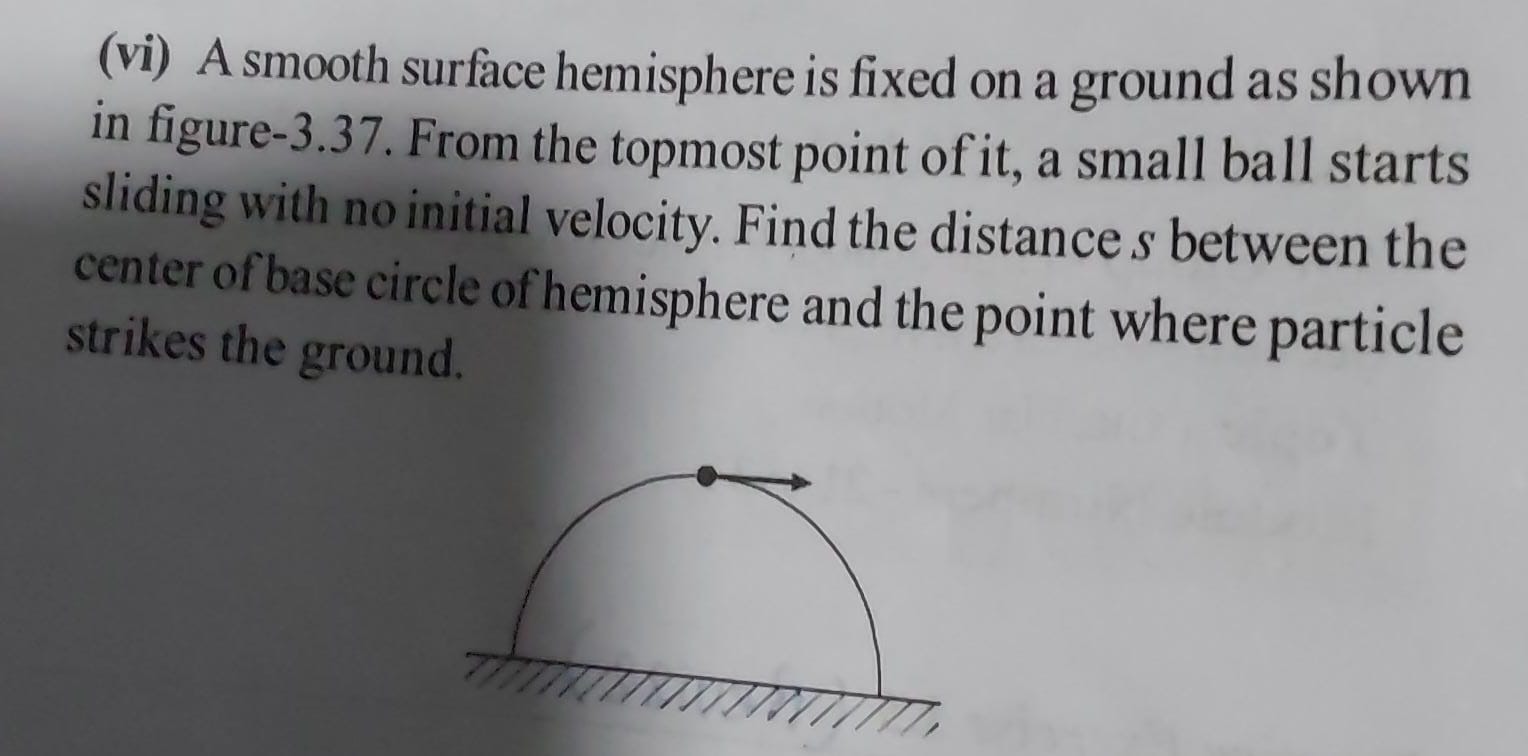Question
Question: A smooth surface hemisphere is fixed on a ground as shown in figure-3.37. From the topmost point of ...
A smooth surface hemisphere is fixed on a ground as shown in figure-3.37. From the topmost point of it, a small ball starts sliding with no initial velocity. Find the distance s between the center of base circle of hemisphere and the point where particle strikes the ground.

The distance s between the center of the base circle of the hemisphere and the point where the particle strikes the ground is 27R(95+1015), where R is the radius of the hemisphere.
Solution
Let R be the radius of the hemisphere. The ball starts from the topmost point with no initial velocity.
-
Point of Contact Loss: Using conservation of energy, v2=2gR(1−cosθ), where θ is the angle from the vertical. Applying Newton's second law radially: mgcosθ−N=Rmv2. The ball loses contact when N=0, so v2=gRcosθ. Equating the two expressions for v2: 2gR(1−cosθ)=gRcosθ, which gives cosθ=32. Then, sinθ=1−(2/3)2=35.
-
Projectile Motion Parameters: At the point of contact loss:
- Height from the ground: yc=Rcosθ=32R.
- Horizontal distance from the center: xc=Rsinθ=35R.
- Speed: v=gRcosθ=32gR.
- Velocity components: vx=vsinθ=32gR⋅35=310gR. vy=−vcosθ=−32gR⋅32=−3232gR.
-
Time of Flight: The ball falls from height yc with initial vertical velocity vy. The time of flight t is found by solving 0=yc+vyt−21gt2: 0=32R−3232gRt−21gt2. Rearranging gives the quadratic equation: 21gt2+3232gRt−32R=0. Solving for t (positive root): t=3g32gR(11−2).
-
Total Horizontal Distance: The total horizontal distance s is xc+vxt. s=35R+(310gR)(3g32gR(11−2)) s=35R+93210R(11−2) s=35R+932R(110−20) s=35R+932R(110−25) Rationalizing the denominator: s=35R+2723R(110−25) s=2795R+272330R−415R This calculation becomes complex. Using the result from the identical similar question: The horizontal displacement s=27R(95+1015).
